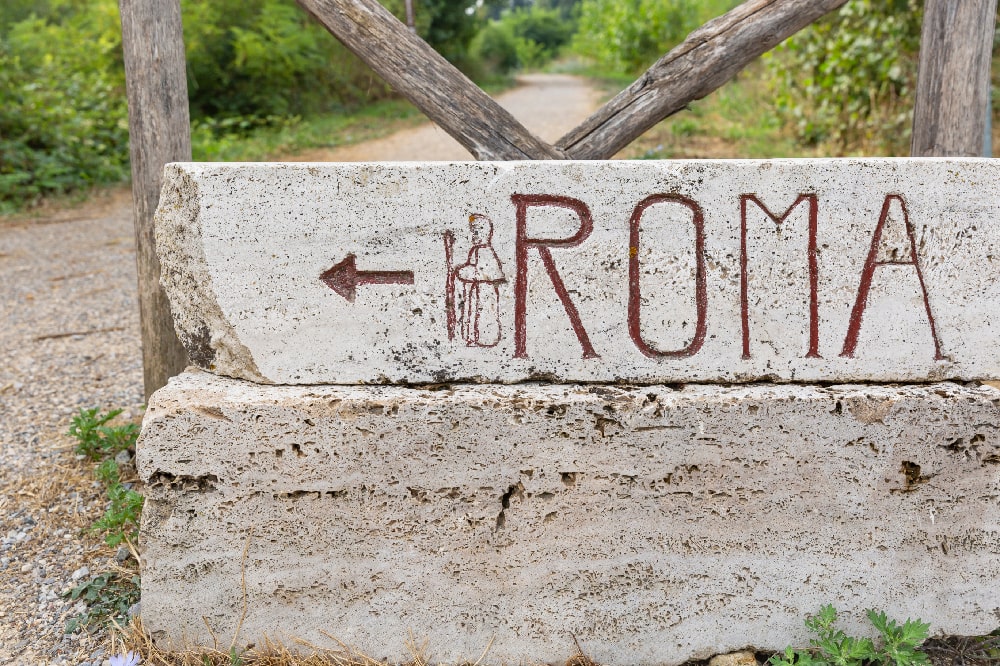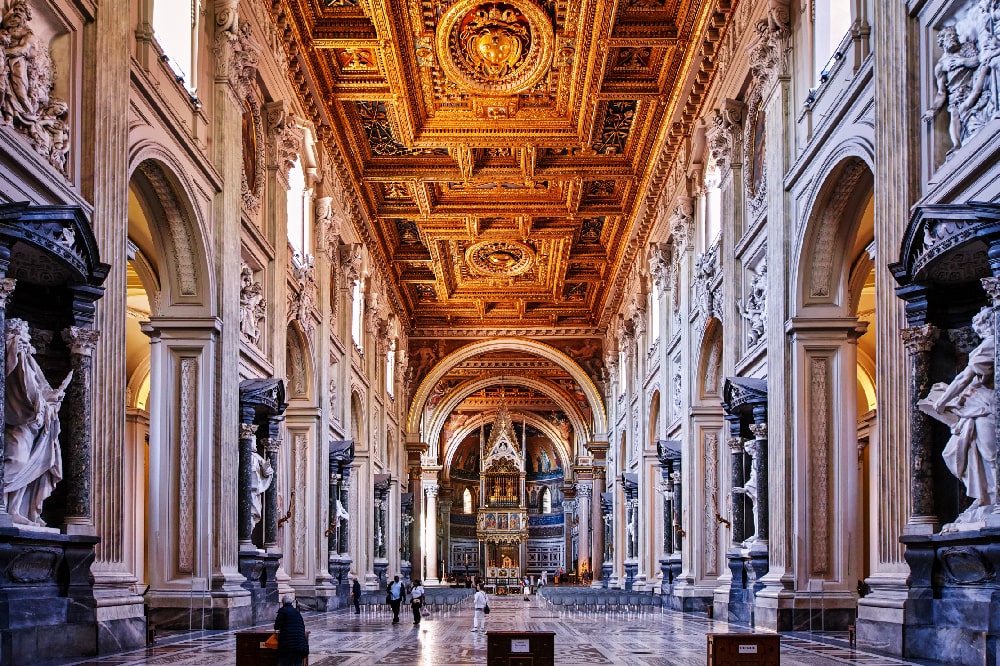The Seven Churches Tour is an ancient devotional itinerary still undertaken by believers today. A pilgrimage to plan ahead of the 2025 Jubilee
The Seven Churches Tour is a fascinating route of devotion that stretches for about 20 kilometres, touching the seven most significant basilicas in Rome.
The sacred route begins from the majestic Basilica of St. Peter, the heart and symbol of Christianity, and continues along the Tiber River until it intersects with Viale Guglielmo Marconi, where stands St. Paul Outside the Walls, another of the major basilicas, which houses the tomb of St. Paul. From here, it continues along Via delle Sette Chiese to reach the Basilica of St. Sebastian Outside the Walls, in the Ardeatino district, along the Appian Way and then arrives on the Caelian Hill at the Basilica of St. John Lateran, the Cathedral of Rome, the principal place of worship of its diocese and the oldest and most important basilica in the West. Then you arrive at the Lateran, where stands the Basilica of Santa Croce in Gerusalemme, built starting in the 4th century to house the relics of the Passion of Jesus, in particular part of the Cross, brought to Rome by St. Helena, Mother of Constantine. At the beginning of the extra-urban stretch of the Via Tiburtina, you encounter St. Lawrence Outside the Walls, next to which the municipal cemetery of Verano was built, and the pilgrimage concludes atop the Esquiline, where stands the Basilica of Santa Maria Maggiore, the only one to have maintained its original paleochristian structure. After the Jubilee of 2000, the Basilica of St. Sebastian was replaced by a visit to the Sanctuary of Our Lady of Divine Love.
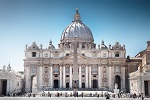
Saint Peter in the Vatican: Church symbol of the whole Christian world
Saint Peter in the Vatican is a basilica full of meanings, mysteries…
With the opening of the Holy Door on December 24, 2024, the Jubilee of 2025 will begin, which, as tradition dictates, will take place mainly in Rome. The highlights and celebrations will take place mainly in Vatican City and in the papal basilicas of Rome. As in the past, believers will be able to obtain plenary indulgence by crossing the threshold of the four Major Basilicas: St. Peter’s Basilica, where the Holy Door will be opened, a symbol of welcome and forgiveness; the Basilica of St. John Lateran, considered the cathedral of Rome and the seat of the Bishop of Rome, the Pope; St. Paul Outside the Walls Basilica: one of the four papal basilicas of Rome, dedicated to the apostle Paul; Basilica of Santa Maria Maggiore: one of the oldest and most important Marian churches in the world.

The Jubilee 2025 Events Calendar
The calendar of events for the Jubilee 2025 has been published, twelve months of events and occasions to…
In addition to these, other churches and minor basilicas will likely be involved in the Jubilee route. This could be a splendid opportunity to follow in the footsteps of the ancient pilgrims along the Seven Churches route and appreciate the wonders of the capital.
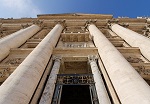
Holy Door: what it is and what its opening represents
The opening of the Holy Door marks the beginning of the Jubilee, but it also represents a…
Seven Churches Pilgrimage
The Seven Churches Tour is a pilgrimage tradition that dates back to the 4th century. On the occasion of the Jubilee, the pilgrimage took on an even more special meaning. In fact, in ancient times, to obtain plenary indulgence on the occasion of the Jubilee, it was necessary to fulfil four fundamental requirements:
- be in Rome;
- receive the sacrament of confession;
- visit the main basilicas of Rome, which on the occasion of the first Jubilee, proclaimed in 1300, were St. Peter’s and St. Paul’s Outside the Walls, to which St. John Lateran was added in the Jubilee of 1350 and that of St. Mary Major in the Jubilee of 1390;
- pray for personal spiritual health and for that of all Christians.

The churches had to be visited by Roman residents for 30 days, while for foreign pilgrims the required period was 15 days.
The Seven Churches Tour was completed on the occasion of the Jubilee of 1550 in response to the unrestrained secular celebrations of Carnival. On that occasion, in addition to the four major basilicas already mentioned, the minor basilicas were added: St. Lawrence Outside the Walls, St. Sebastian Outside the Walls, and Santa Croce in Gerusalemme.
It was St. Philip Neri who gave great impetus to this tradition, in response to the unrestrained dissoluteness of the Roman Carnival, and this is one of the reasons why today the Seven Churches Tour is organized to coincide with the feast dedicated to him on May 26 (but is repeated in September). The tour takes place at night and is led by a Father of the Congregation of the Oratory of St. Philip Neri.
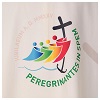
Via delle Sette Chiese takes its name from the pilgrimage practice invented by St. Philip Neri and still connects the Basilica of St. Sebastian on the Appian Way with the Basilica of St. Paul Outside the Walls. The route wanted by the Saint and shared with the pilgrims of his time also included, in addition to stopping and praying at the seven Jubilee basilicas, a visit to the tombs of the first Christian martyrs. In fact, through the city, one reached the Roman countryside, where the Catacombs were located.
The Via delle Sette Chiese, also known as Via Paradisi, was a route that wound through the countryside outside the city walls. Along this route, one could admire the distant panorama of Rome, surrounded by the majestic Aurelian Walls, and find oneself near the Almone River, which bordered the hills of the Ostiense estates. This rural and suggestive scenery gave the road a particular, almost paradisiacal atmosphere, characterized by the tranquillity of the countryside and the panoramic view of the eternal city.
In the time of St. Philip Neri, the pilgrimage lasted two days and involved various devotional practices related to the number seven, one of the most significant for the Christian faith. Pilgrims recited seven penitential psalms, asking forgiveness for the seven deadly sins. They then gathered to meditate on the seven stages of the Passion of Jesus, the seven effusions of his blood, the seven words spoken by Christ on the cross, the seven gifts of the Holy Spirit, the seven sacraments, and the seven works of mercy.

The Seven Churches Tour is still today an act of traditional devotion practised especially during the Easter Triduum, or Time of Passion, between the evening of Holy Thursday and Holy Saturday, and in this case, the visit also includes a prayer near the Blessed Sacrament preserved on the Altar of Reposition, the designated place for the conservation of the Eucharist from the end of the Messa in Coena Domini on Holy Thursday until the Celebration of the Lord’s Passion on Good Friday.
The Seven Churches of Rome
Below are listed the seven Churches touched by the pilgrimage:
Basilica of St. Peter in the Vatican – Located in Vatican City, it is the heart of Christianity and one of the most important churches in the world.
Basilica of St. Paul Outside the Walls – The Papal Basilica of St. Paul Outside the Walls is one of the four papal basilicas of Rome, the largest after St. Peter’s in the Vatican. It stands on the Via Ostiense, where, according to tradition, the apostle Paul was buried after his martyrdom.
Basilica of St. John Lateran – It is the cathedral of the bishop of Rome, the Pope, and the oldest and most important of the four papal basilicas of Rome.
Basilica of St. Lawrence Outside the Walls – Located outside the city walls, it was built by Constantine near the tomb of the martyr Lawrence.
Basilica of Santa Croce in Gerusalemme – One of the seven churches built by Constantine, it is known for housing the relics of the Passion of Christ.
Basilica of St. Sebastian Outside the Walls – Located on the Appian Way, it is dedicated to the Christian martyr St. Sebastian.
Basilica of Santa Maria Maggiore – One of the four papal basilicas of Rome, it is one of the oldest Marian churches in the world.
These seven basilicas offer an extraordinary opportunity to explore the rich history and artistic beauty of Rome, as well as representing places of significant spiritual importance for Catholic believers.

Pilgrimage to Rome: Among Christians’ Preferred Destinations
A pilgrimage to Rome has always been one of the most significant spiritual experiences for Christians…
Basilicas of Rome
The Basilicas of Rome are traditionally divided between Major Basilicas and Minor Basilicas. The former are:
Basilica of St. Peter in the Vatican, or Vatican Basilica;
Basilica of St. John Lateran, Cathedral of Rome, or Lateran Archbasilica;
Basilica of St. Paul Outside the Walls, or Ostian Basilica;
Basilica of Santa Maria Maggiore, or Liberian Basilica.
Each Major Basilica houses a papal altar and a Holy Door, which is opened on the occasion of the Jubilee, or Holy Year, and by crossing it is possible to obtain a plenary indulgence. The Lateran Basilica also houses the Pope’s cathedra, while the other three basilicas have a papal throne.
With its circular route of about 20 kilometres, the Seven Churches Tour touches the four major papal basilicas and three of the most important Minor Basilicas: the Basilica of St. Lawrence Outside the Walls, the Basilica of Santa Croce in Gerusalemme, the Basilica of St. Sebastian Outside the Walls (replaced since 2000 by the Sanctuary of Our Lady of Divine Love).

The Chair of Saint Peter: the meaning of the work and the origins of the feast
What is meant by the Chair of Saint Peter? What is and where…

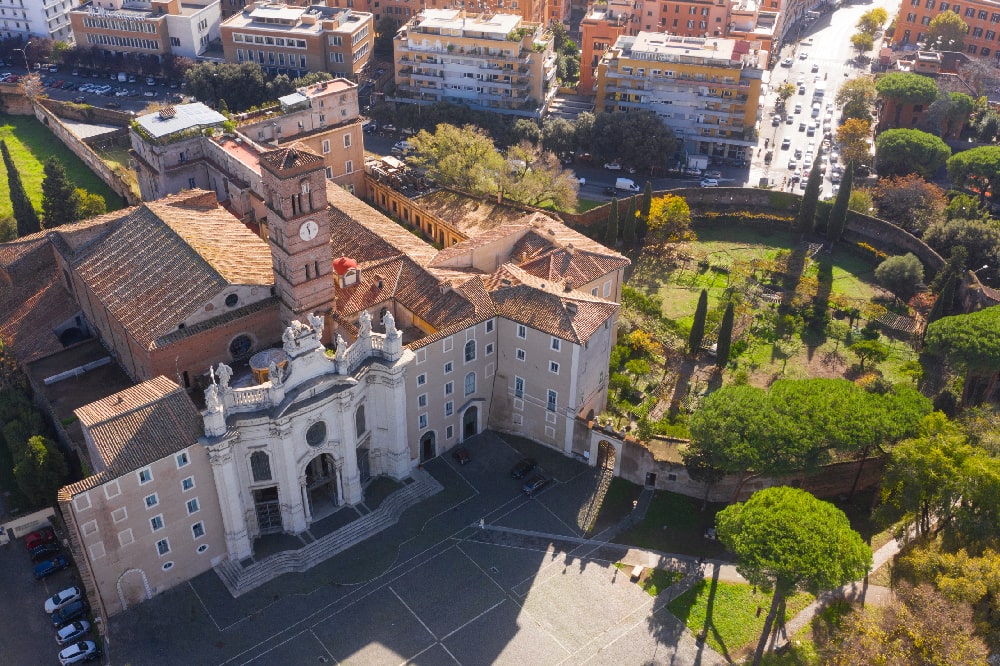
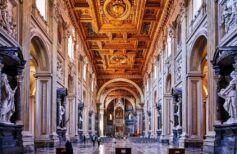
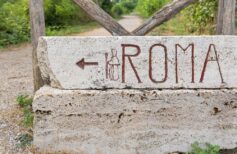
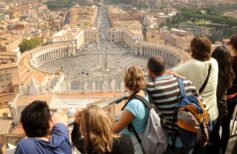
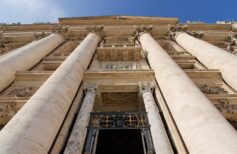
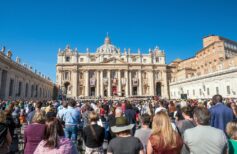

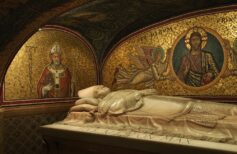
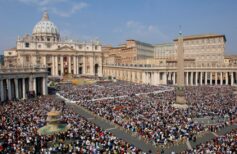







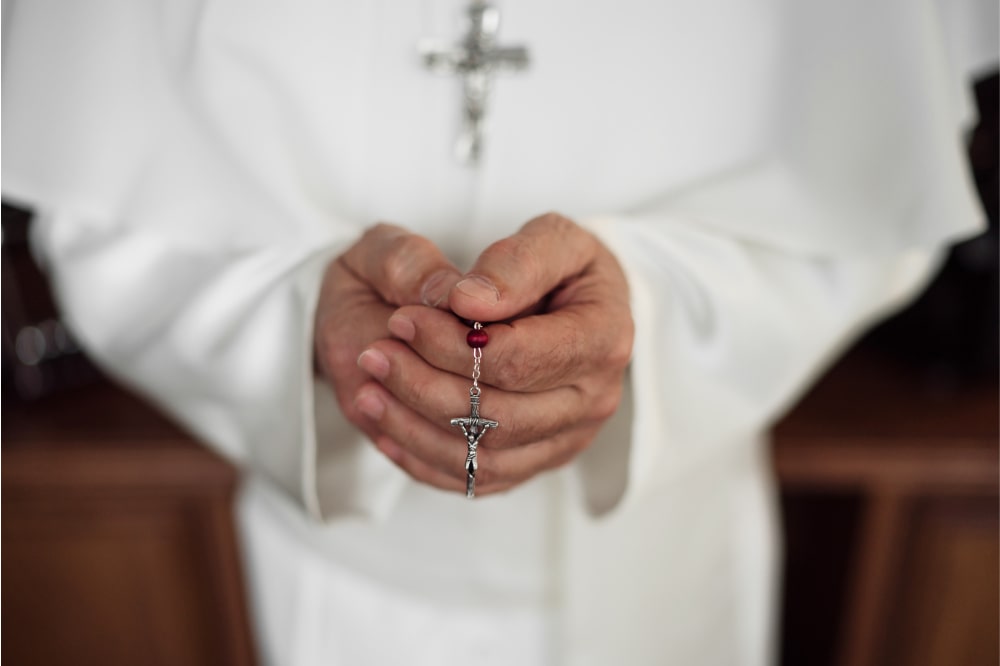
 5 June 2024
5 June 2024
